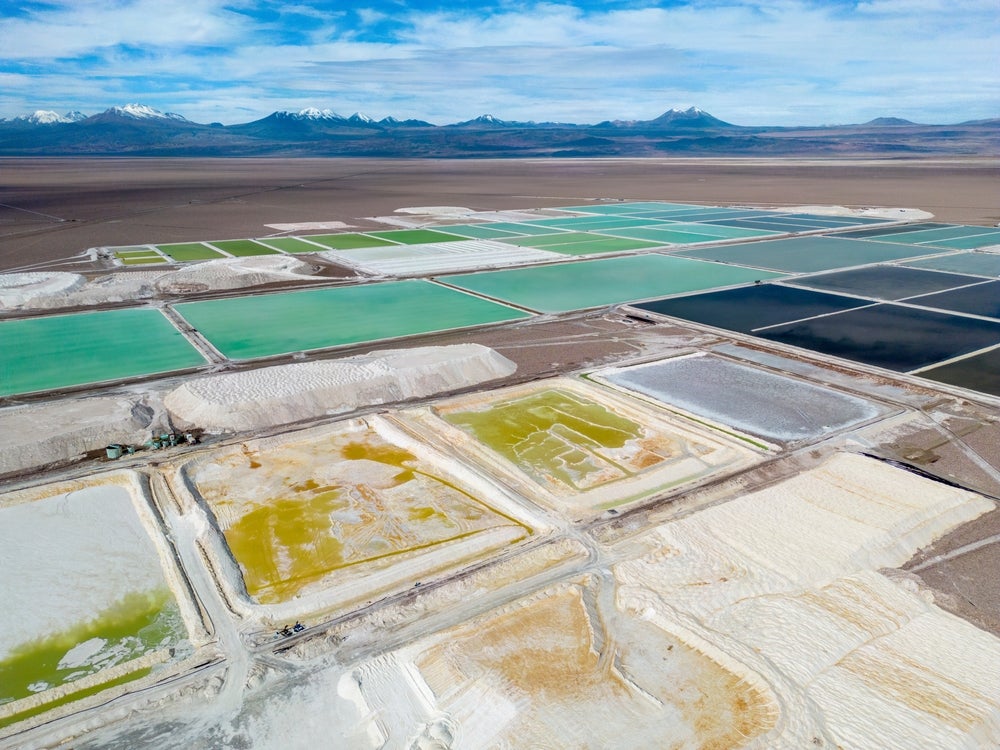

Key findings
- Switzerland tops the ranking as the least risky country.
- Venezuela is the riskiest country.
- Foreign direct investment (FDI) and GDP per capita are negatively correlated against country risk.
- More successful FDI countries have lower country risk scores.
- Rich countries are generally deemed less risky compared with poorer countries.
- Western European and Asian countries dominate the top of the index (less risky).
- Poorer Middle East and sub-Saharan Africa countries are deemed the most risky.
- Country risk seen as a more longlisting site-selection factor (than shortlisting).
GlobalData’s Global Country Risk Index measures country risk across six pillars: macroeconomic risks, political environment, legal environment, demographic and social structure effectiveness, technology and infrastructure, and environment. Each pillar is weighted, with macroeconomic risks accounting for the largest proportion of index. In total, 136 countries are analysed. The data is as of the fourth quarter of 2020.
Regional analysis of Global Country Risk Index
The majority (70%) of western European countries are deemed very low risk. In fact, no western European country is deemed high or very high risk. Conversely, three-quarters of sub-Saharan Africa countries analysed were considered high or very high risk. Mauritius is the only low-risk sub-Saharan Africa country. South America paints a similar picture. Five of the nine countries analysed are very high risk. Venezuela is the lowest-ranked (riskiest) country in the index.
The spread of risk is most notable across countries in the Asia-Pacific and Middle East and North Africa regions. Eight Asia-Pacific countries are in the very low risk bracket, while nine are high risk or very high risk. Similarly, in Middle East and North Africa six countries are low risk or very low risk, while eight countries are high risk or very high risk.
Switzerland least risky, Venezuela most risky
Unsurprisingly, the top ten – the ten least risky countries – is dominated by western European countries and Asian city-states. Switzerland tops the index with a score of 18.9 out of 100 (a score of 100 being the highest risk). The country scores well across all metrics, however it is particularly strong for limiting macroeconomic risks and demographic and social structure effectiveness, ranking second and third, respectively, of all countries in the index. Switzerland has a stable economy and political structure. It is one of the freeest economies in the world and, although relatively expensive, has a favourable business environment, particularly towards foreign investment.
Singapore and Denmark followed closely, ranking second and third out of 136 countries. Of the top three countries, Singapore performs relatively better in the legal environment and demographic and social structure effectiveness pillars, while Denmark is stronger for political environment and technology and infrastructure.
How well do you really know your competitors?
Access the most comprehensive Company Profiles on the market, powered by GlobalData. Save hours of research. Gain competitive edge.

Thank you!
Your download email will arrive shortly
Not ready to buy yet? Download a free sample
We are confident about the unique quality of our Company Profiles. However, we want you to make the most beneficial decision for your business, so we offer a free sample that you can download by submitting the below form
By GlobalDataAt the opposite end of the scale, Venezuela is ranked as the riskiest country in the index with a score of 77.5, finishing last for macroeconomic risks. Its economy is in tatters, experiencing hyperinflation for several years. In 2018, the government revalued its currency (devalued by about 95%) in an attempt to curb inflationary pressures. This has been unsuccessful. Many data agencies have stopped reporting GDP figures due to currency and reporting issues. In 2020, it ranked 188th out of 190 countries in the World Bank’s Doing Business report. Venezuela also ranks poorly for its political environment (133rd) and legal environment (132nd) in the GlobalData Global Country Risk Index.
Other high-risk countries include five that have a GDP per capita of below $1,000 (Burundi, Chad, Madagascar, Syria and Yemen). Many common themes exist among the riskiest countries: political instability, insufficient legal systems, an inability to care for society and a lack of infrastructure progression to develop the domestic economy. It should be noted that the ten riskiest countries overall were not the riskiest for the environment category, with the likes of India and Bangladesh recording poorer scores by this measure.
Relationship of country risk to economic prosperity
Given the Country Risk Index includes a macroeconomic pillar, it would perhaps be expected to see a correlation between GDP per capita and a country's risk score. In testing this hypothesis via a simple single variant regression model, there is indeed a statistically significant negative correlation between the GDP per capita of a country and its risk score. The test had an r-square value of 0.58 and the p-values of the intercept and GDP per capita coefficients were both statistically significant at the 95% confidence level (both had p-values less than 0.05).
In more simplistic terms, one can assume that as GDP per capita increases, country risk would be expected to decrease (i.e richer countries are deemed less risky, while poorer countries are deemed riskier). In FDI terms, we see more successful countries (such as Germany, Singapore, Switzerland, the UK and the US) with high GDP per capita and low country risk scores, whereas countries such as Syria, Venezuela and Yemen appear at the opposite end of the scale – low GDP per capita and high country risk score.
Risk versus FDI reward
In analysing announced greenfield FDI projects per 100,000 population against country risk, we see a negative correlation. As the country risk score is lower, one can expect the number of FDI projects per 100,000 population to be higher. Smaller, successful FDI countries such as Ireland, Hong Kong, Luxembourg, and UAE appear towards the top left of the chart, whereas those with high country risk scores (to the right of the chart) receive little inward investment.
The importance of country risk for FDI
There are many other factors that contribute to an FDI decision. Country risk may only enter the thinking depending on the shortlist of locations being proposed. For example, a US-company targeting western Europe to open an office may be considering France, Ireland, Germany and UK. Country risk is unlikely to be a key factor in this decision process as all of these locations are relatively low risk. Other factors such as talent , costs, business environment and connectivity would be expected to be higher up the criteria list.
In contrast, if a company is looking to build a manufacturing plant in Africa, country risk may be more of a contributory factor in the decision-making process. In this instance, country risk may be an initial metric in deciding on a long list of locations. Once the long list has been decided, other FDI factors may then be used to benchmark countries against each other to filter down to a short list of locations – potentially for the site-selection phase.
Country risk methodology
GlobalData's Country Risk Model is a unique country risk-rating model that determines the existing and future level of country risk by assessing various qualitative and quantitative factors. The index is formulated to help firms create their global business strategies on the basis of historical developments in an economy and also their future expectations.
The model is updated quarterly capturing specific risks that undermine the growth prospects of a particular country. Thus, it helps in analysing current conditions and also future outlook of a country.
The index is divided into six weighted pillars: macroeconomic risks (48%), political environment (12%), legal environment (8%), demographic and social structure effectiveness (15%), technology and infrastructure (14%), and environment (3%). Each pillar contains sub-pillars that house raw data.






